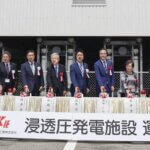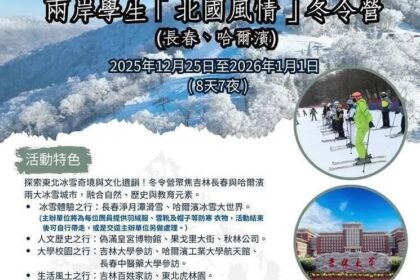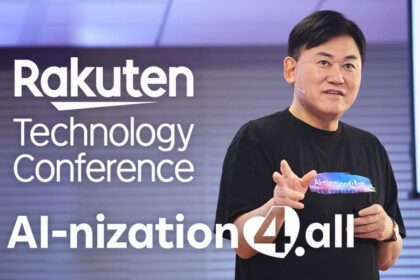South Korea’s Shrinking Workforce and the Promise of Foreign Talent
South Korea, long celebrated for its rapid economic rise and technological prowess, now faces a demographic crisis that threatens its future prosperity. With a record-low birth rate and the world’s fastest-aging population, the country’s workforce is shrinking at an unprecedented pace. In response, new research suggests that welcoming more skilled foreign graduates could be a game-changer for South Korea’s economy—potentially boosting its GDP by as much as 6%.
- South Korea’s Shrinking Workforce and the Promise of Foreign Talent
- How Foreign Graduates Could Boost South Korea’s Economy
- Current State of Foreign Graduate Enrollment in South Korea
- Policy Initiatives: Making South Korea More Attractive to Foreign Talent
- Challenges: Barriers to Integration and Retention
- Lessons from Abroad: The Global Competition for Talent
- Broader Implications: Demographics, Diversity, and Economic Resilience
- In Summary
According to a recent study by the Korea Chamber of Commerce and Industry (KCCI) and a research team led by Professor Kim Duk-pa of Korea University, increasing the number of skilled foreign graduates in South Korea could unlock over US$100 billion in economic value. The findings, released in August 2024, highlight immigration as a crucial lever for addressing the nation’s labor shortages and maintaining its competitive edge in the global economy.
Why Is South Korea Facing a Labor Shortage?
South Korea’s demographic challenges are stark. As of July 2024, the country’s population stood at 51.68 million, with only about 29.75 million considered economically active (those aged 15 or older who are employed or seeking work). The birth rate has plummeted to record lows, and the population is aging faster than any other country in the world. This means fewer young people are entering the workforce, while a growing proportion of the population is retiring.
These trends have far-reaching implications. A shrinking labor force can slow economic growth, reduce tax revenues, and strain social welfare systems. For a country that has built its success on a highly educated, industrious workforce, the stakes could not be higher.
How Foreign Graduates Could Boost South Korea’s Economy
The KCCI study analyzed data from all 17 administrative regions of South Korea between 2012 and 2023. It found a clear correlation: when the share of registered foreign university graduates in the economically active population rises by one percentage point, per capita gross regional domestic product (GRDP) increases by about 0.11%.
Based on this relationship, the researchers calculated that if South Korea were to welcome an additional one million skilled foreign graduates, its GDP could rise by around 6%—equivalent to roughly 145 trillion won (about US$104 billion). If the total number of registered foreign residents grew from the current 1.35 million to five million, the economic gain could reach 361 trillion won.
Professor Kim Duk-pa emphasized that the benefits of attracting skilled foreigners go far beyond simply increasing the workforce. He explained:
“Foreign workers also stimulate consumption, improve labor productivity, strengthen industrial competitiveness, and help modernize the economy.”
In other words, foreign graduates not only fill labor gaps but also bring new skills, ideas, and connections that can drive innovation and growth across industries.
Comparisons with Other Countries: The Economic Impact of International Students
South Korea’s interest in attracting foreign graduates mirrors trends seen in other major economies. In the United States, for example, international students contributed nearly $44 billion to the economy in the 2023-24 academic year and supported almost 400,000 jobs. Studies show that for every three international students enrolled, one new job is created, thanks to their spending on tuition, housing, and living expenses.
Similarly, in Hawaii, foreign students generated $160 million in economic activity in a single academic year, supporting jobs and boosting local businesses. These examples underscore the broader economic value of international students—not just as future workers, but as consumers and contributors to local economies.
Current State of Foreign Graduate Enrollment in South Korea
Despite the clear economic benefits, South Korea has so far struggled to attract large numbers of highly skilled foreign workers. Ministry of Justice data from 2023 shows that only 68,642 foreigners held professional work visas (such as the E-1 for professors or E-7 for specialty occupations). The Korean Educational Development Institute reported just 52,154 foreign graduate students enrolled in 2024, meaning the pool of talent with master’s and doctorate degrees remains far below demand.
However, there are signs of progress. In the first half of 2024, over 200,000 international students arrived in South Korea—a record high and a 50% increase from the previous year. The government’s “300K project” aims to raise the number of foreign students at domestic universities to 300,000 by 2027, up from around 170,000 in 2022. This surge is driven by a combination of policy initiatives, the global popularity of Korean culture (K-pop, K-dramas), and the relative affordability of studying in South Korea compared to Western countries.
Where Are These Students Coming From?
The majority of international students in South Korea come from China (55.2%), followed by Vietnam, Japan, Uzbekistan, and Mongolia. There is also a growing number of students from India, thanks in part to targeted recruitment efforts and educational partnerships.
Most international students are in their 20s and 30s, with a significant proportion pursuing degrees in science, technology, engineering, and mathematics (STEM) fields—areas where South Korea faces acute labor shortages.
Policy Initiatives: Making South Korea More Attractive to Foreign Talent
Recognizing the urgent need for skilled workers, the South Korean government and universities have launched a range of initiatives to attract and retain foreign graduates. These include:
- Visa Incentives and Work Opportunities: The government has relaxed visa requirements, extended work hours for students, and allowed graduates to stay in Korea for up to three years while seeking employment. Undergraduate and language students can now work up to 25 hours per week, while master’s students can work up to 35 hours.
- Scholarships and Financial Support: Programs like the Global Korea Scholarship (GKS) and university-specific grants offer substantial financial aid, covering tuition, living expenses, and even airfare. Scholarships are often tied to language proficiency or academic achievement.
- Career Development and Integration: Ministries and local governments are organizing job fairs, offering Korean language programs, and providing career counseling to help international students transition into the workforce. Special efforts are being made to attract talent to regions facing population decline.
- Long-Term Settlement and Family Pathways: The KCCI report recommends creating cities designed for long-term settlement, with strong education and healthcare services, tax breaks, and flexible regulations to ease social and economic integration.
These measures are designed not only to attract students but also to encourage them to stay and build their careers—and families—in South Korea.
The Role of Korean Culture and International Partnerships
South Korea’s global cultural influence, particularly through K-pop and Korean dramas, has made the country an increasingly attractive destination for young people worldwide. The government and universities are leveraging this “soft power” by promoting study programs abroad, establishing Korean Education Centres in countries like India, and forming international academic partnerships.
For example, collaborations between Korean and Indian universities are expanding research, internships, and job opportunities in fields like renewable energy and technology. Such partnerships not only attract students but also foster long-term economic and cultural ties.
Challenges: Barriers to Integration and Retention
Despite these positive trends, South Korea still faces significant challenges in attracting and retaining foreign graduates:
- Language and Cultural Barriers: While many universities offer some courses in English, the majority of instruction is in Korean, especially outside Seoul. This can make it difficult for international students to fully integrate and succeed academically and professionally.
- Complex Visa Processes: Although improvements have been made, navigating the visa and work permit system can still be daunting for foreign students and graduates.
- Limited Support for Long-Term Settlement: Many foreign graduates struggle to find pathways to permanent residency or family reunification, making it less attractive to build a life in Korea.
- Workforce Integration: Some employers remain hesitant to hire foreign graduates, citing language skills or concerns about cultural fit. More needs to be done to educate businesses about the value of international talent.
Addressing these barriers will be crucial if South Korea hopes to realize the full economic potential of its international student and graduate population.
Lessons from Abroad: The Global Competition for Talent
South Korea is not alone in its quest to attract skilled foreign graduates. Countries like the United States, Canada, Australia, and the United Kingdom have long relied on international students to fuel their economies and innovation ecosystems. In the U.S., for instance, 23% of billion-dollar companies were founded or co-founded by former international students. These graduates bring diversity, new perspectives, and global networks that enrich their host countries.
However, competition for talent is intensifying. As Western countries tighten immigration rules, Asian destinations like South Korea, Japan, and Singapore are becoming more attractive alternatives. South Korea’s strong education system, advanced infrastructure, and vibrant culture give it a competitive edge—but only if it can create an environment where foreign graduates feel welcome and can thrive.
Building an Innovation Hub: The Role of Startups and Industry
South Korea’s economic future depends not only on its traditional conglomerates (chaebols) but also on a dynamic startup ecosystem. Startups are creating more new jobs than major corporations, and international talent is essential for driving innovation in fields like artificial intelligence, biotechnology, and advanced manufacturing.
The KCCI report recommends linking corporate investment to talent recruitment, especially in sectors like semiconductors and AI. By attracting advanced manufacturing plants and fostering industry-academia collaboration, South Korea can ensure a steady supply of specialized workers and position itself as a global innovation hub.
Broader Implications: Demographics, Diversity, and Economic Resilience
Attracting more foreign graduates is not just about filling labor shortages—it’s about building a more diverse, resilient, and globally connected society. International students and graduates contribute to cultural exchange, foster mutual understanding, and help South Korea navigate the challenges of an aging population.
As Lee Jong-myung, head of KCCI’s industry innovation division, put it:
“In the age of AI, the global competition for talent is intensifying. It is time to build internationally competitive cities that help foreign professionals settle quickly and contribute to growth.”
By embracing openness and diversity, South Korea can secure its place as a leading economic and innovation powerhouse in the decades to come.
In Summary
- South Korea faces a shrinking workforce due to record-low birth rates and rapid population aging.
- New research suggests that welcoming one million more skilled foreign graduates could boost GDP by 6% (about US$104 billion).
- International students and graduates bring economic, cultural, and innovation benefits, as seen in other countries like the U.S.
- South Korea’s “300K project” aims to attract 300,000 foreign students by 2027, with recent surges in enrollment driven by policy changes and cultural appeal.
- Government initiatives include visa incentives, scholarships, career support, and efforts to make long-term settlement easier for foreign graduates.
- Challenges remain, including language barriers, complex visa processes, and limited pathways to permanent residency.
- Global competition for talent is fierce, but South Korea’s strong education system and vibrant culture give it a unique advantage.
- Attracting and retaining foreign graduates is key to maintaining economic growth, fostering innovation, and building a more diverse, resilient society.












